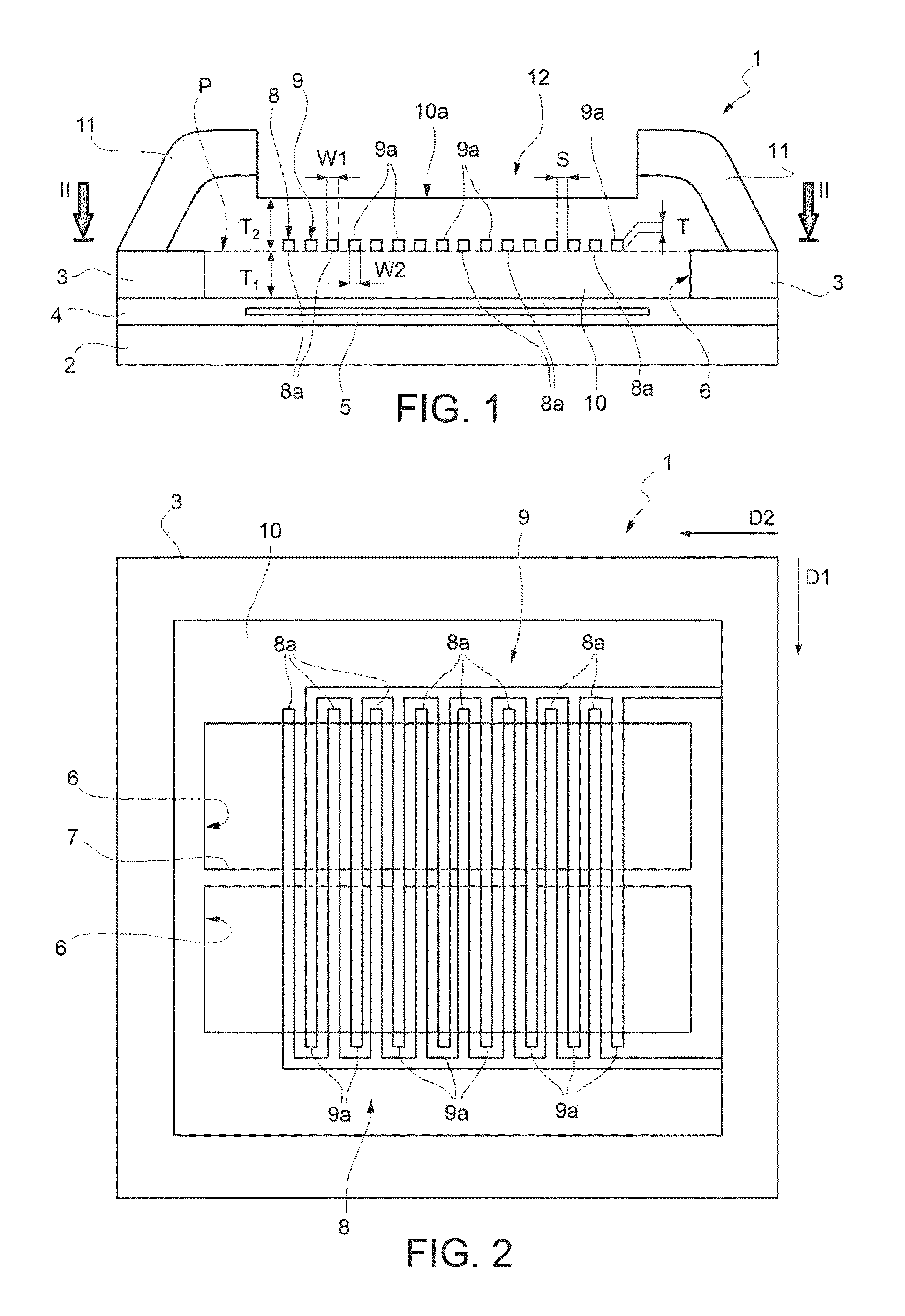Sensor of volatile substances and process for manufacturing a sensor of volatile substances
a technology of volatile substances and sensors, which is applied in the direction of variable capacitors, instruments, and mechanical means, can solve the problems of low sensitivity and achieve the effect of increasing sensitivity
- Summary
- Abstract
- Description
- Claims
- Application Information
AI Technical Summary
Benefits of technology
Problems solved by technology
Method used
Image
Examples
Embodiment Construction
[0027]With reference to FIGS. 1 and 2, a sensor of volatile substances, in the case in point a humidity sensor, is designated as a whole by the number 1.
[0028]The sensor of volatile substances 1 is of a capacitive type and uses as sensitive material a hygroscopic polymer the electrical permittivity of which varies as a function of the humidity absorbed.
[0029]In detail, the sensor of volatile substances 1 comprises a substrate 2, for example of silicon, provided on which is a structural layer 3 of dielectric material, for example silicon oxide. In one embodiment, present between the substrate 2 and the structural layer 3 is a dielectric layer 4 incorporating a heater 5. In other embodiments, the dielectric layer 4 and the heater may be absent, or else the heater 5 may be made directly on the substrate 2.
[0030]The substrate 2 and the dielectric layer 4 define a supporting layer for the structural layer 3 and the other structures described hereinafter.
[0031]The structural layer 3 has o...
PUM
| Property | Measurement | Unit |
|---|---|---|
| thickness | aaaaa | aaaaa |
| widths W1 | aaaaa | aaaaa |
| volatile | aaaaa | aaaaa |
Abstract
Description
Claims
Application Information
 Login to View More
Login to View More - R&D
- Intellectual Property
- Life Sciences
- Materials
- Tech Scout
- Unparalleled Data Quality
- Higher Quality Content
- 60% Fewer Hallucinations
Browse by: Latest US Patents, China's latest patents, Technical Efficacy Thesaurus, Application Domain, Technology Topic, Popular Technical Reports.
© 2025 PatSnap. All rights reserved.Legal|Privacy policy|Modern Slavery Act Transparency Statement|Sitemap|About US| Contact US: help@patsnap.com



